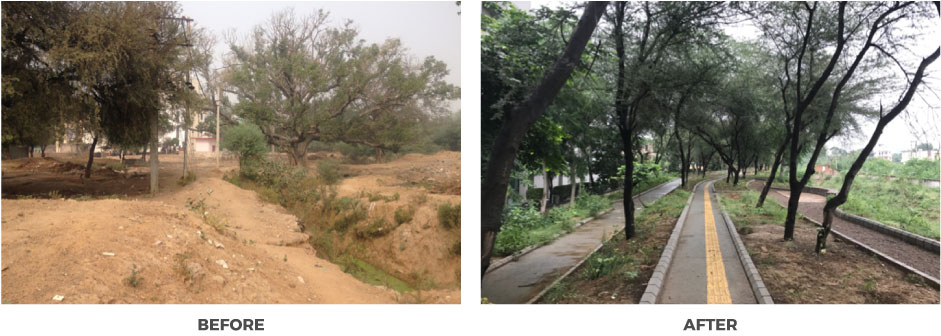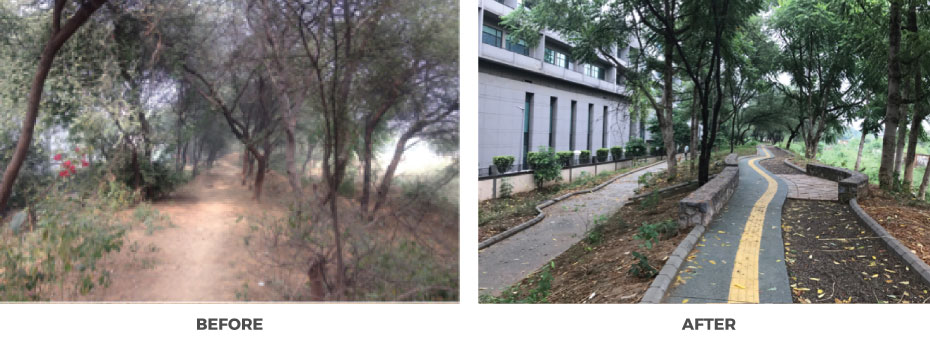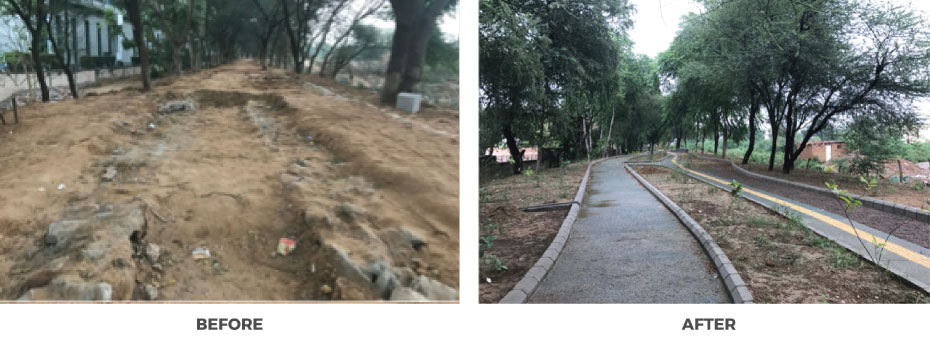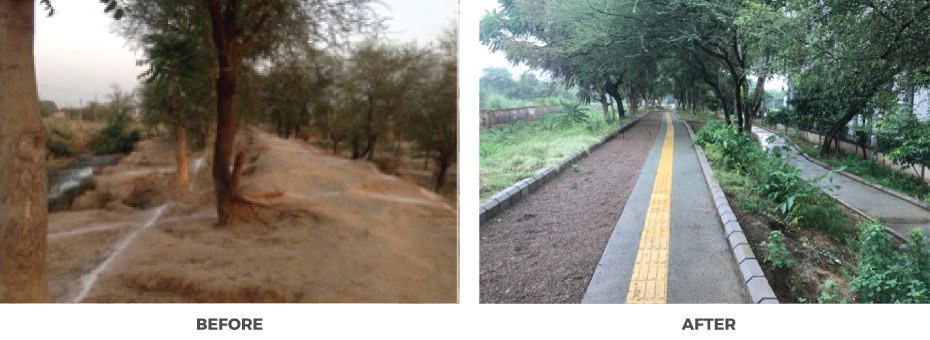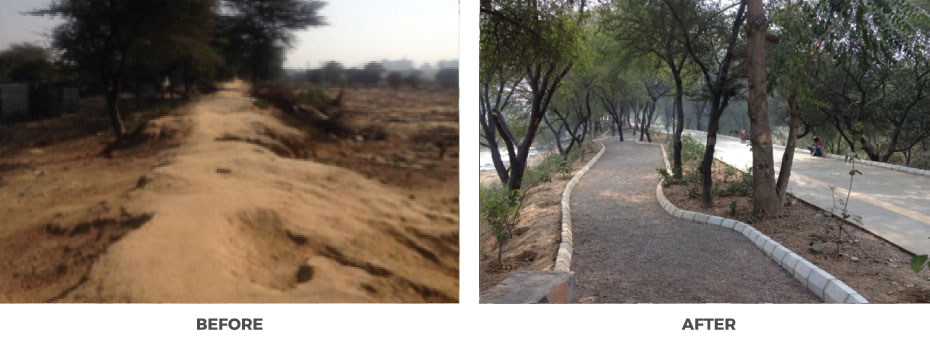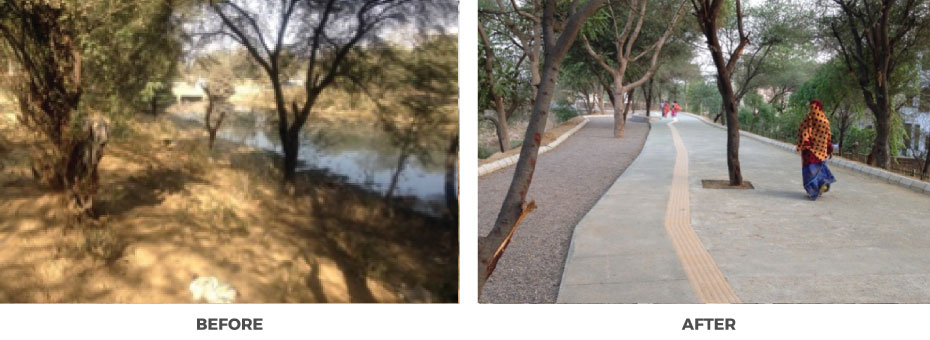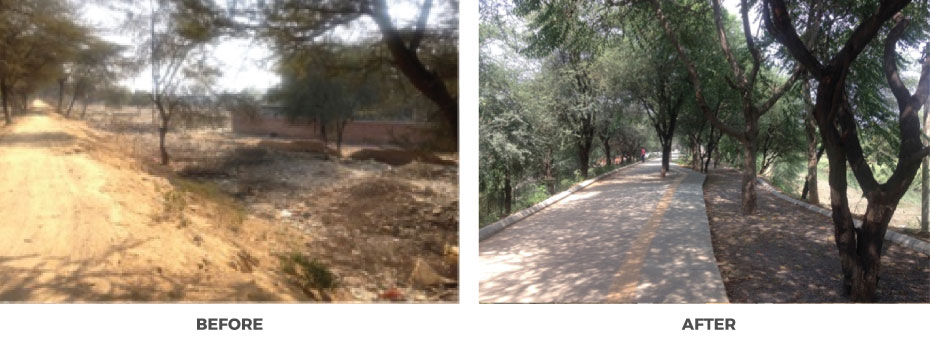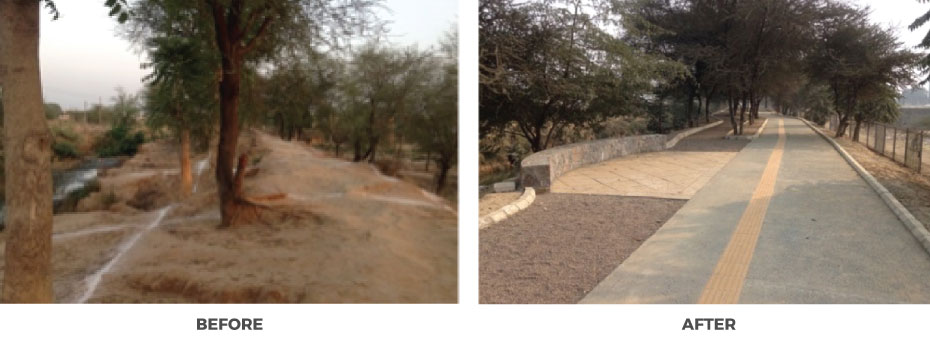
The eco-restoration initiative of the 5.2 km Wazirabad-Chhakarpur bundh has transformed a popular part of Gurgaon. While being a green public space for many it is also that one space that belongs to a community that does not use motorised transport. The project is a collaboration with the Haryana Forest Department and several corporates.
The Bundhs of Gurgaon were devised in ancient times to harness rainwater, maintain the water table, and regulate water management systems for the city. Unfortunately, over the years and with growing urbanisation, all these bundhs got encroached upon. As a result of heavy construction in the catchment, the bundhs eventually became areas used for defecation, dumping debris, and became unsafe for use by citizens for movement across Gurgaon
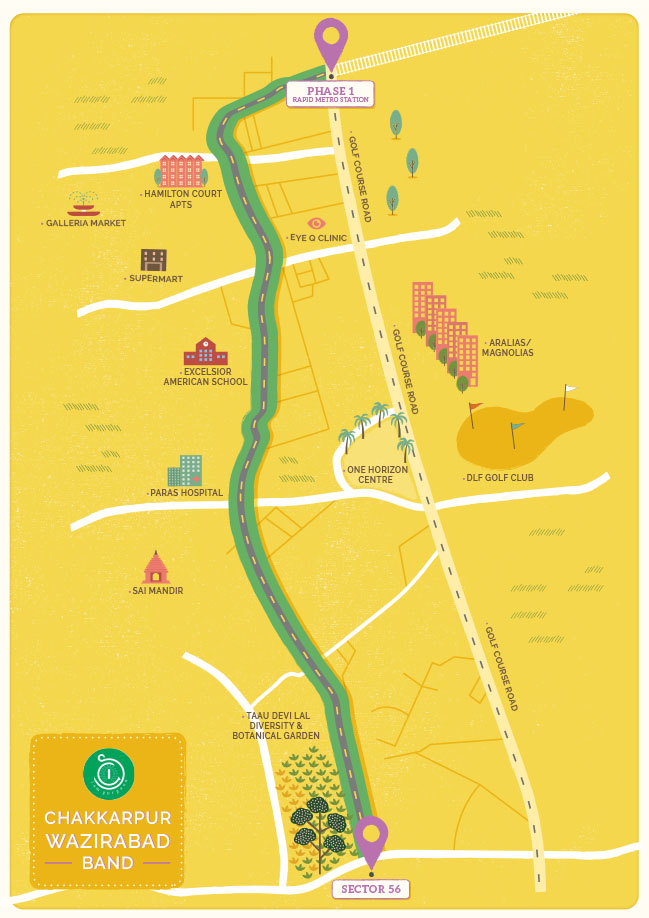
Chakkarpur Wazirabad Bundh, Gurugram
from Phase 1 Rapid Metro Station to Sector 56
What are the impacts of this project?
From an environmental perspective, the green corridor running through urban Gurgaon has ensured a large open breathing space.
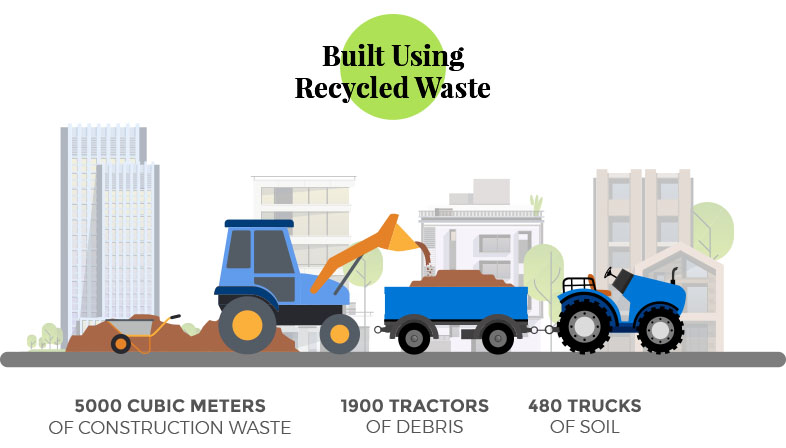
Running along the track is a storm water drain or nullah, which has also been cleaned and de-clogged into a smooth flowing water channel. Over 20 years of garbage dumped on the site has been cleared, including the removal of over 200 trucks of silt and plastic waste from the nullah. This extracted waste has been segregated and properly disposed of. Sewage flowing into the nullah has been stopped and diverted into sewage treatment plants. Further dumping of waste into the nullah has also been prevented. Over 6000 cu.m. of construction and demolition waste has been re-used in the construction of the Bundh.
-
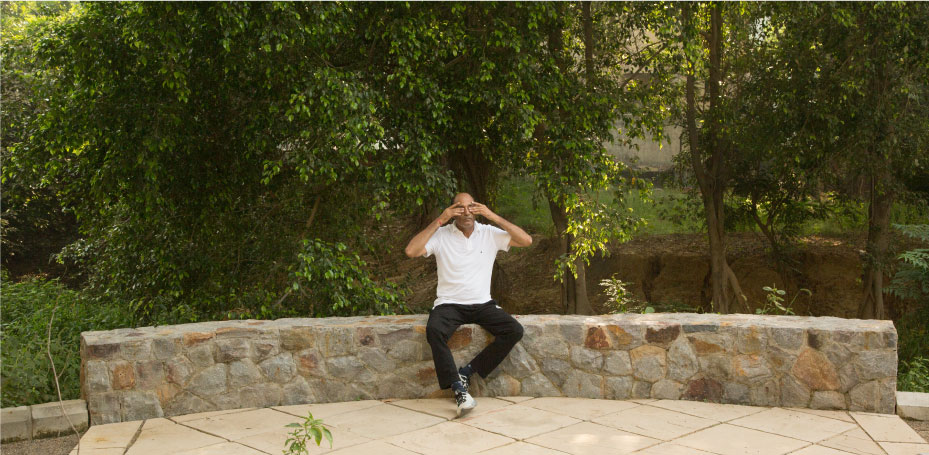
-
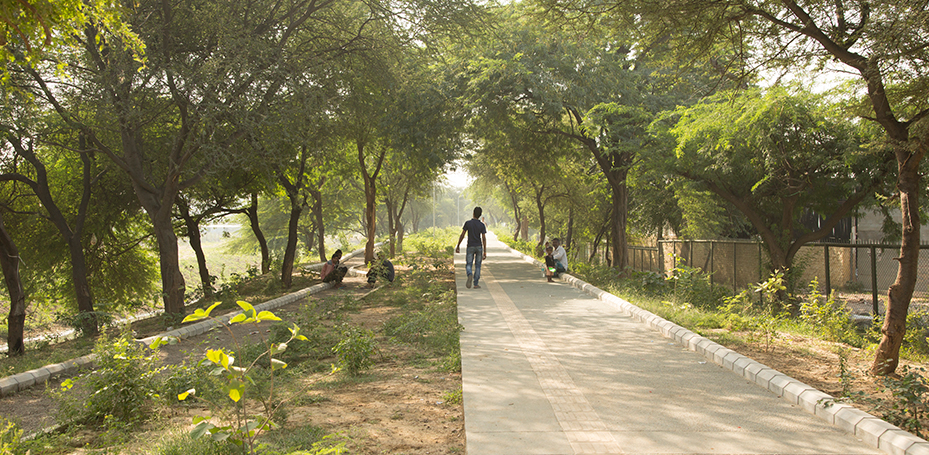
-
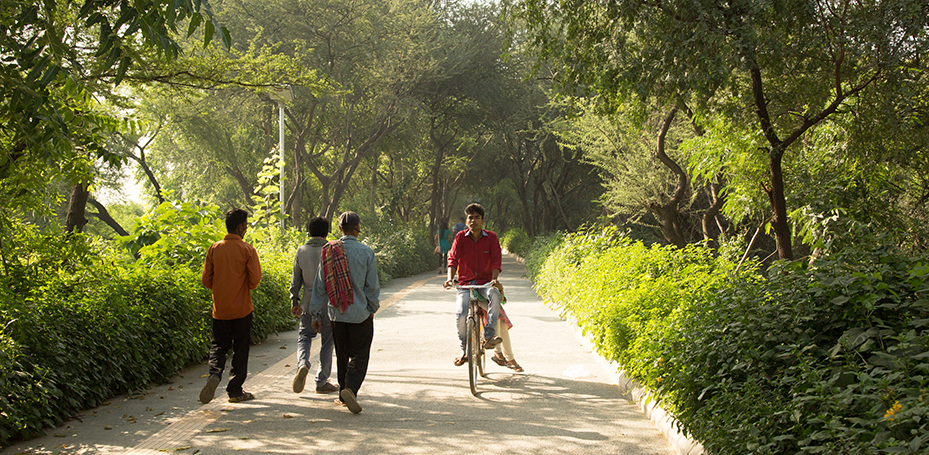
-
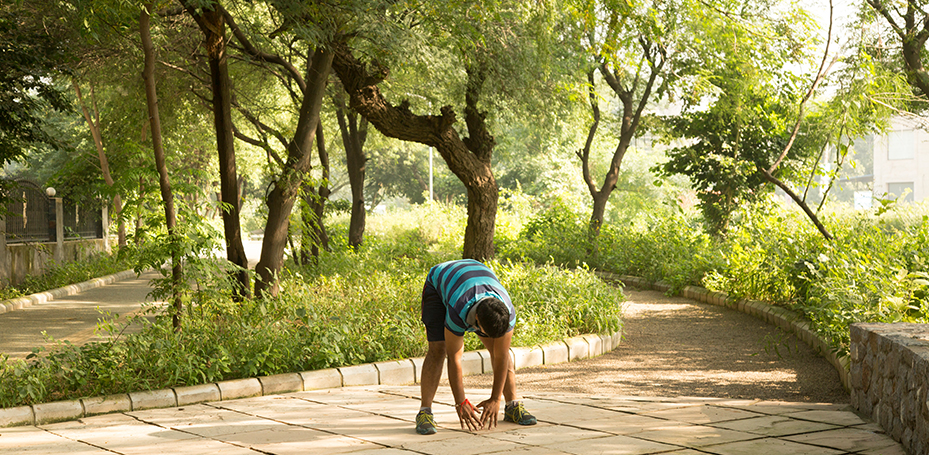 2018-10-02 People use the Bundh for exercise along with their walk
2018-10-02 People use the Bundh for exercise along with their walk -
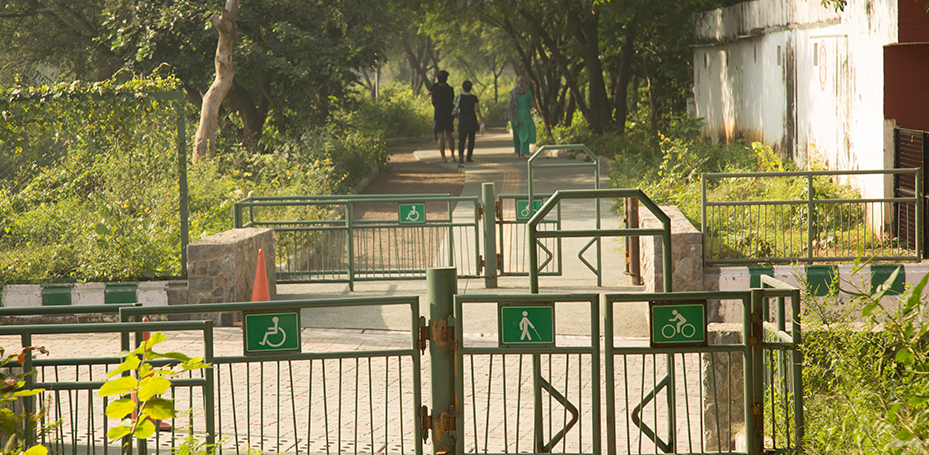
-
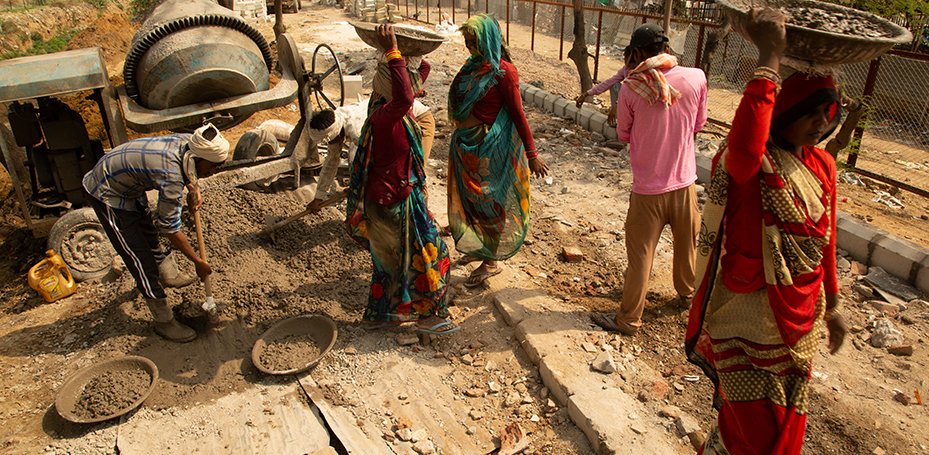
-
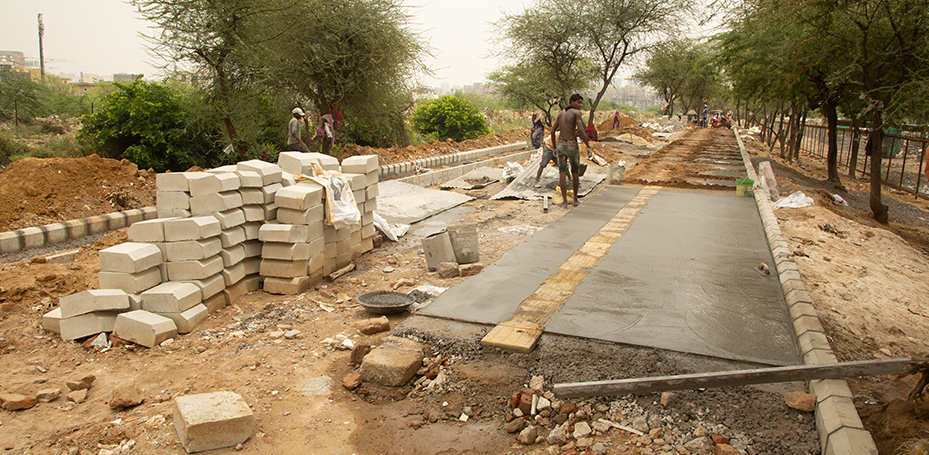
-
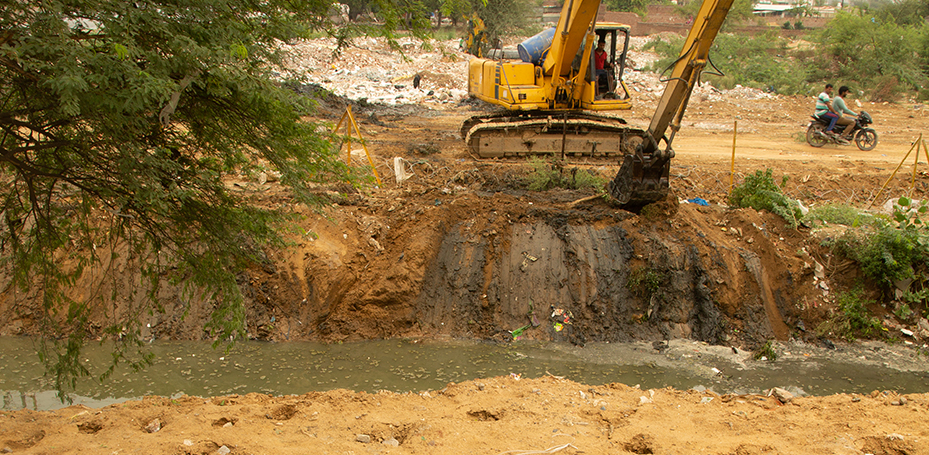
-
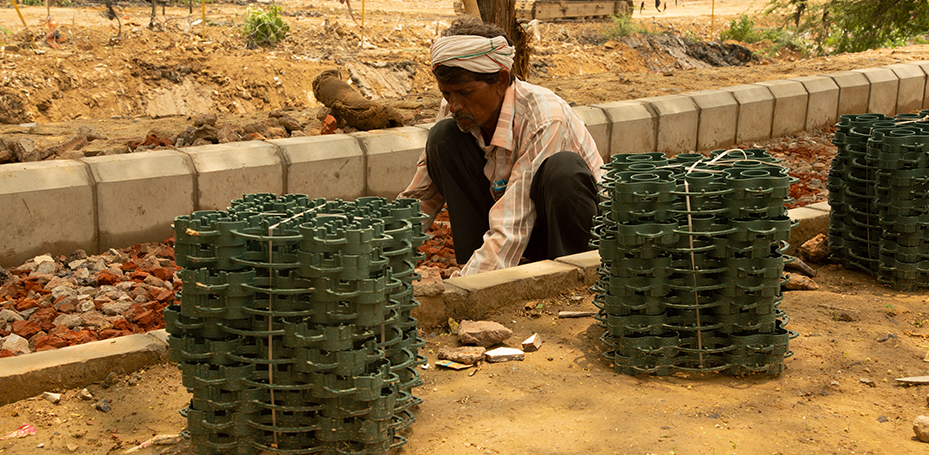
-
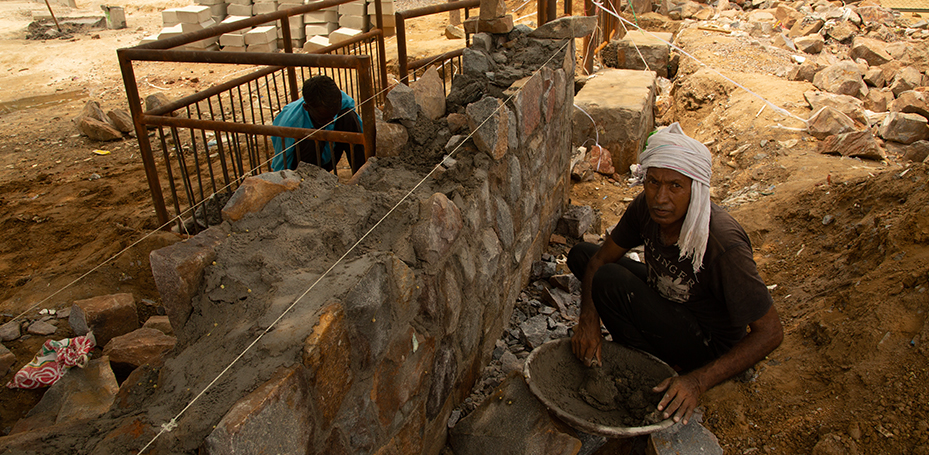
-
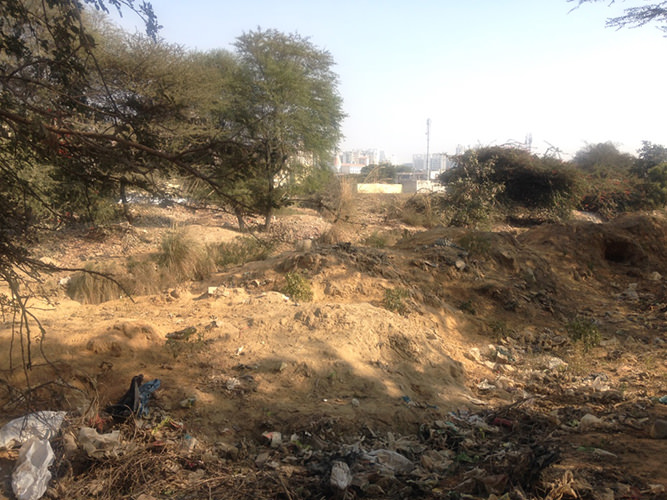 2016-01-09 The Garbage strewn Pond area before construction
2016-01-09 The Garbage strewn Pond area before construction -
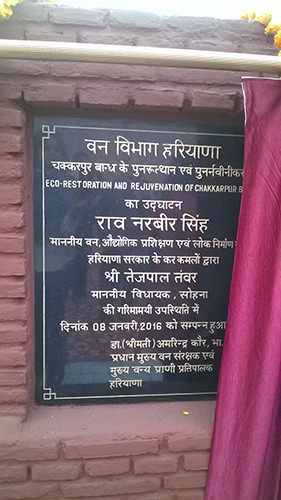 2016-01-16 Inauguration of the Chakkarpur Wazirabad Bundh project
2016-01-16 Inauguration of the Chakkarpur Wazirabad Bundh project -
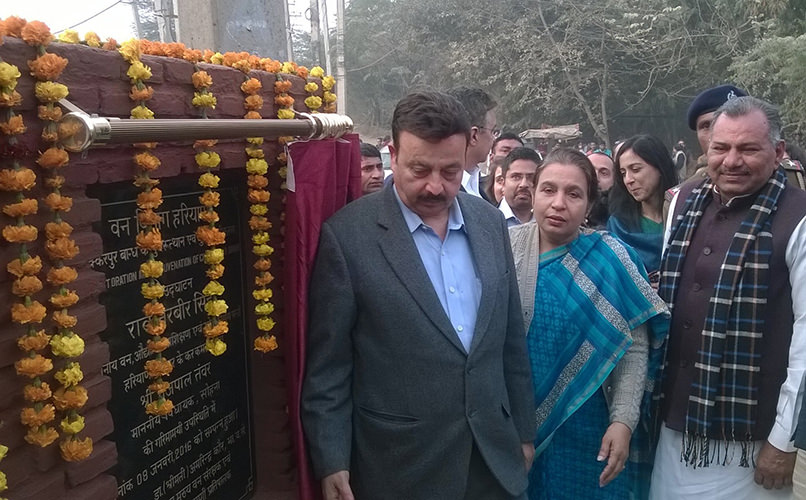 2016-01-16 (2) Rao Narbir Singh inaugurates the 5.2 km Eco Restoration of the
2016-01-16 (2) Rao Narbir Singh inaugurates the 5.2 km Eco Restoration of the
Chakkarpur -Wazirabad Bundh Project -
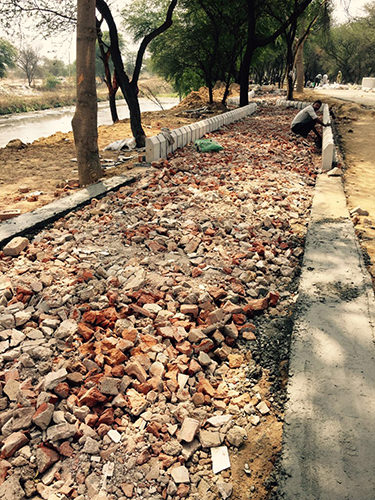 2016-3-18 Construction waste being used to fill the metalled part of the Bundh walkway
2016-3-18 Construction waste being used to fill the metalled part of the Bundh walkway -
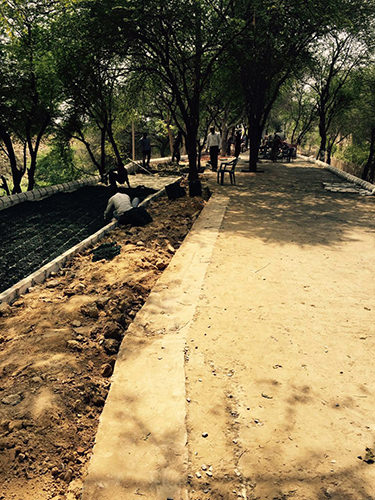 2016-3-18 laying of the walking path in progress, to allow water to be
2016-3-18 laying of the walking path in progress, to allow water to be
trapped so it would percolate into the groud -
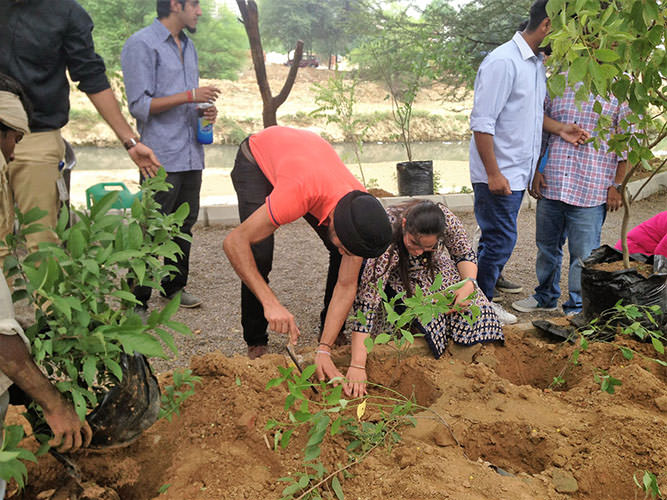 2016-8-10 (1) American Express planting in the First Phase 200 m area
2016-8-10 (1) American Express planting in the First Phase 200 m area -
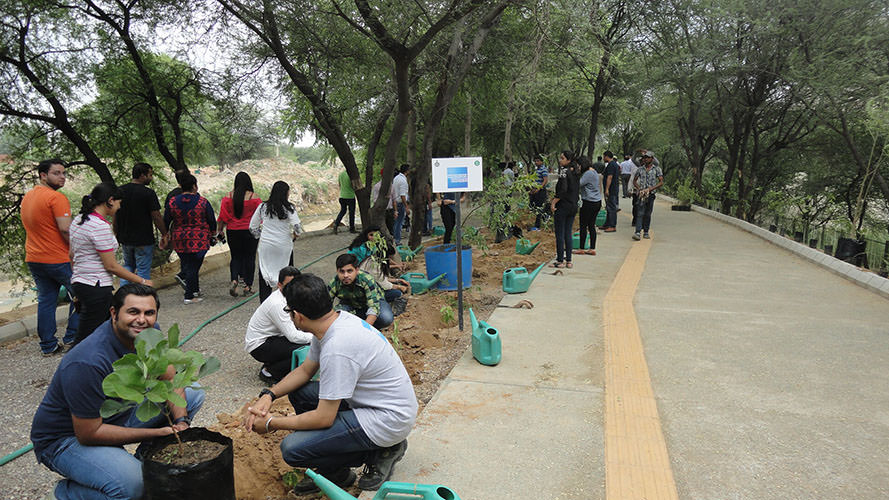 2016-8-10 (2) American Express planting in the First Phase 200 m area
2016-8-10 (2) American Express planting in the First Phase 200 m area -
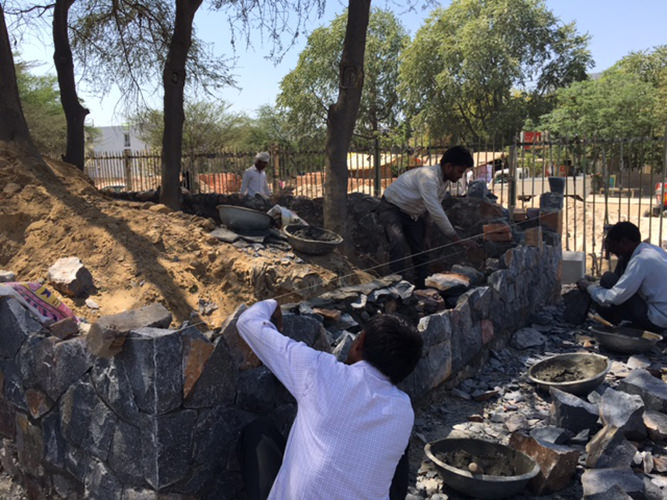 2017-3-22. Final Construction on the entry of the Dhani area
2017-3-22. Final Construction on the entry of the Dhani area -
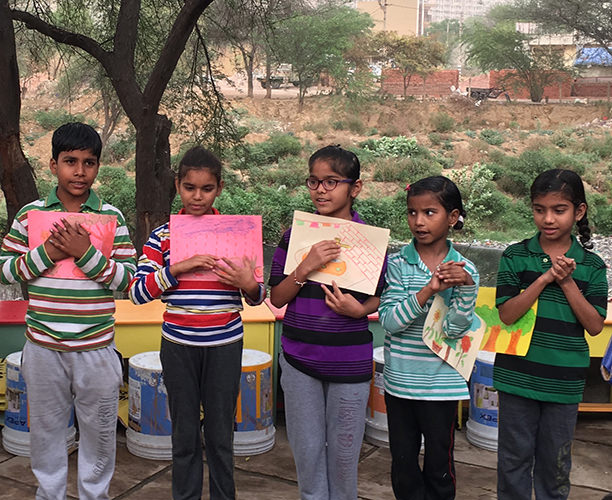 2017-4-22 Enthusiastic children of Nayi Disha at the
2017-4-22 Enthusiastic children of Nayi Disha at the
Earth Day Celebrations at Chakkarpur Bundh -
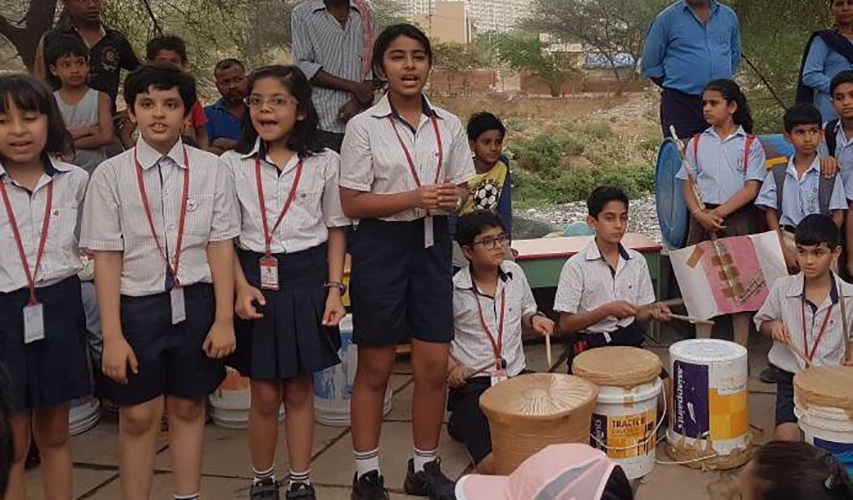 2017-4-22 Shri Ram school presenting their musical performance
2017-4-22 Shri Ram school presenting their musical performance
Earth Day Celebrations at Chakkarpur Bundh -
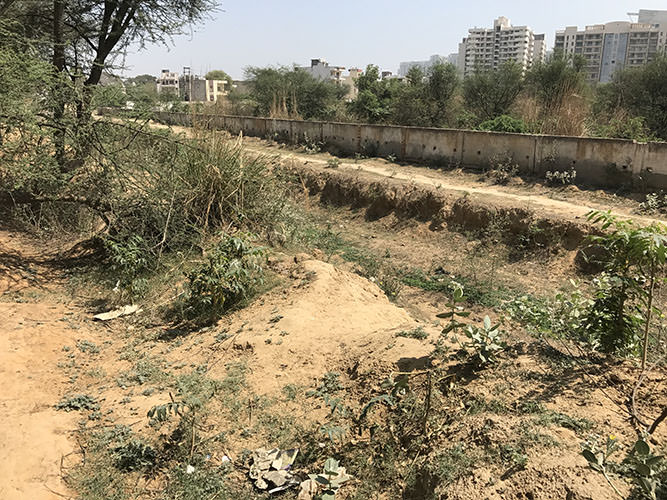 2017-06-10. Area to be planted by Colt this monsoon
2017-06-10. Area to be planted by Colt this monsoon -
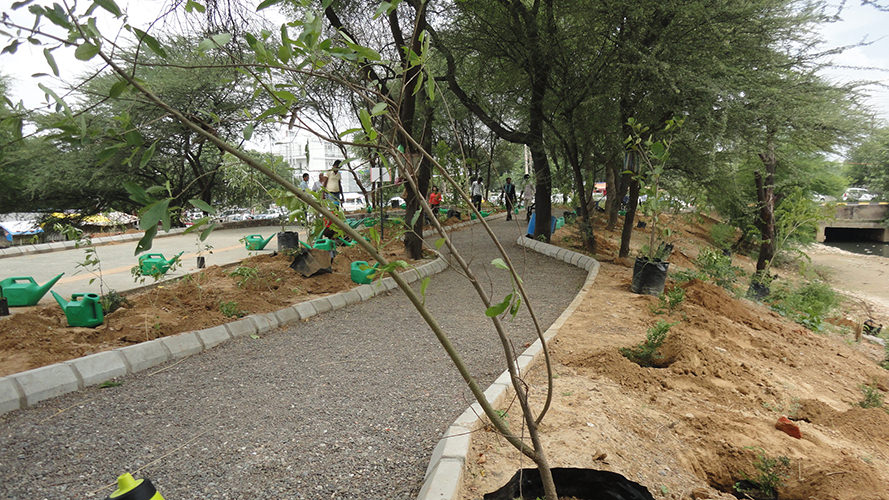 2017-07-28. Area ready for planting today
2017-07-28. Area ready for planting today -
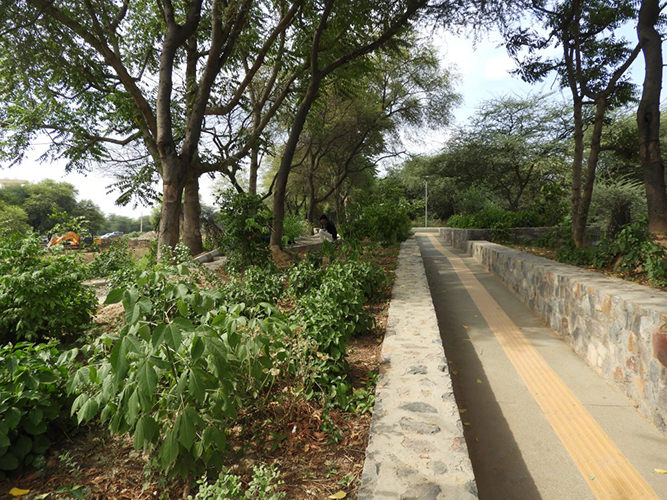 2017-7-28 200 m area flourishing with the rains
2017-7-28 200 m area flourishing with the rains -
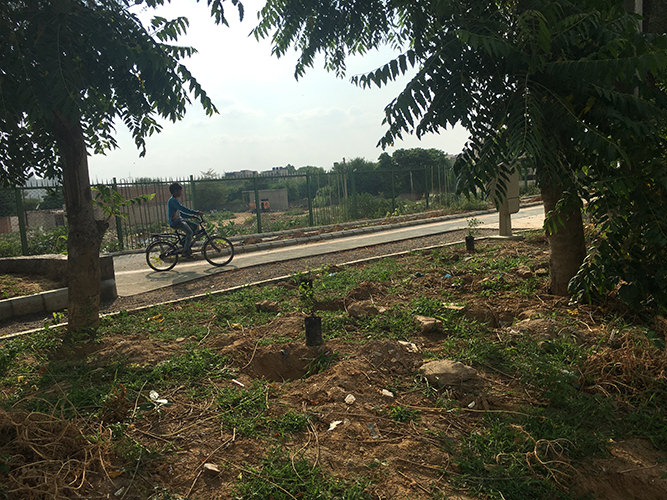 2017-7-28 Planting at the 800 m area
2017-7-28 Planting at the 800 m area -
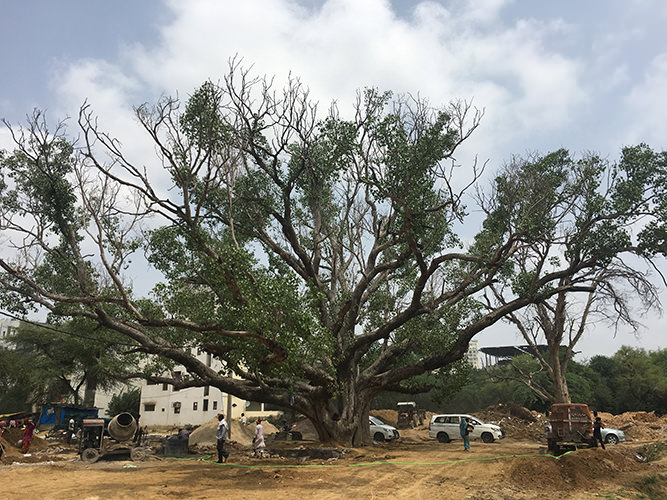 2017-08-03. Our peepal tree in it's glory
2017-08-03. Our peepal tree in it's glory -
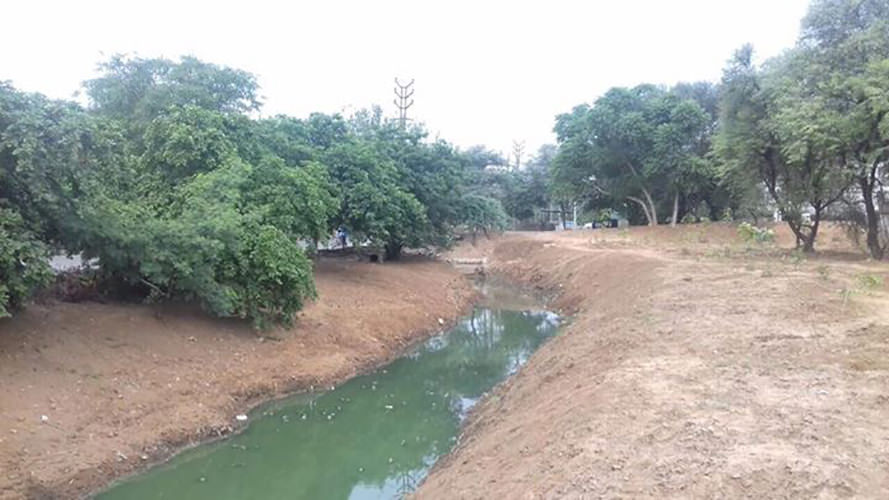 2017-08-29 AVIS Nallah area cleaned, near Paras Hospital
2017-08-29 AVIS Nallah area cleaned, near Paras Hospital -
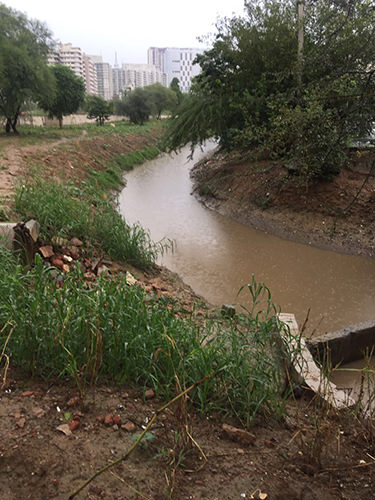 2017-08-29 Genpact Nallah area cleaned, near Paras
2017-08-29 Genpact Nallah area cleaned, near Paras -
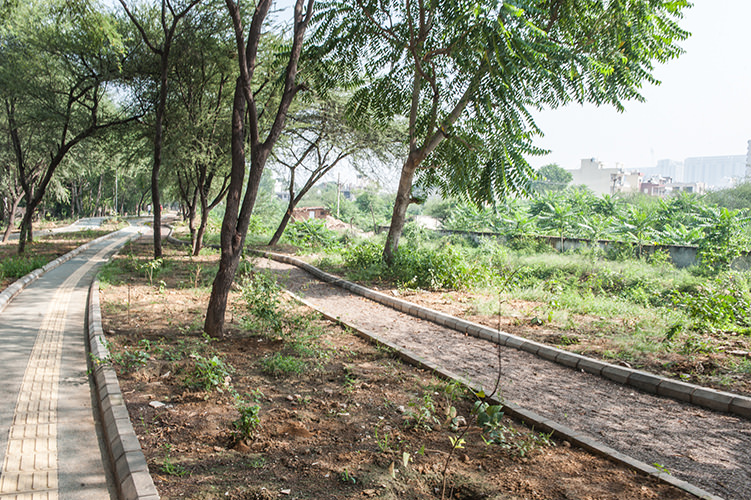 2017-9-23 The area near Paras Hospital which was planted this a month ago
2017-9-23 The area near Paras Hospital which was planted this a month ago -
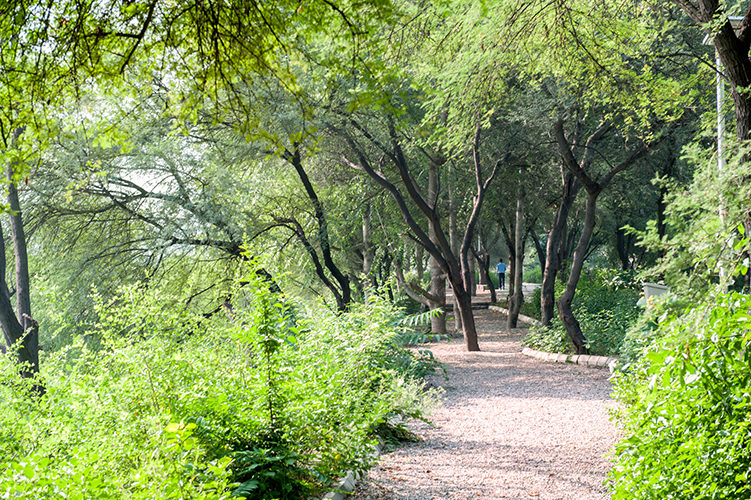 2017-9-28 The lush greens in the area planted a year go
2017-9-28 The lush greens in the area planted a year go -
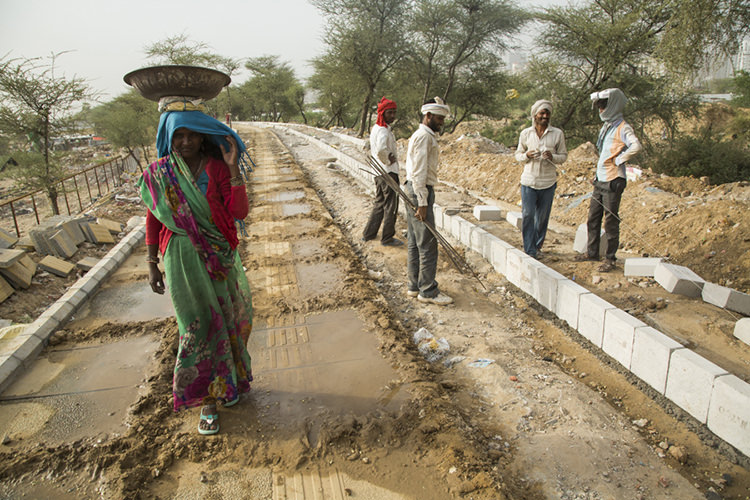 2018-06-25-Construction of the Dhani Area
2018-06-25-Construction of the Dhani Area -
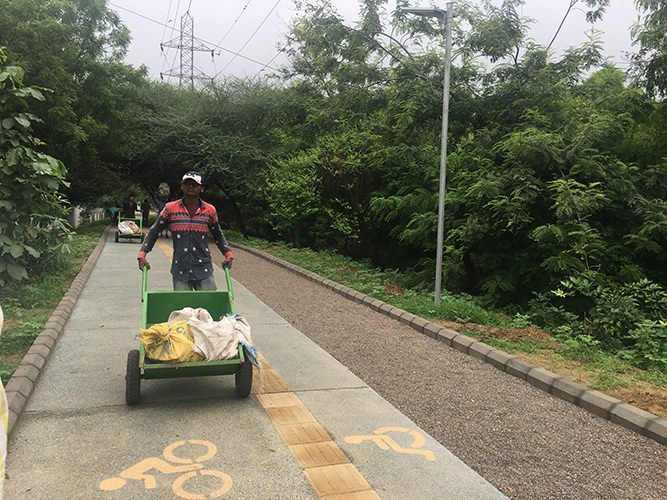 2018-7-26, The Maalis use trolley to carry heavy materials on the Bundh
2018-7-26, The Maalis use trolley to carry heavy materials on the Bundh -
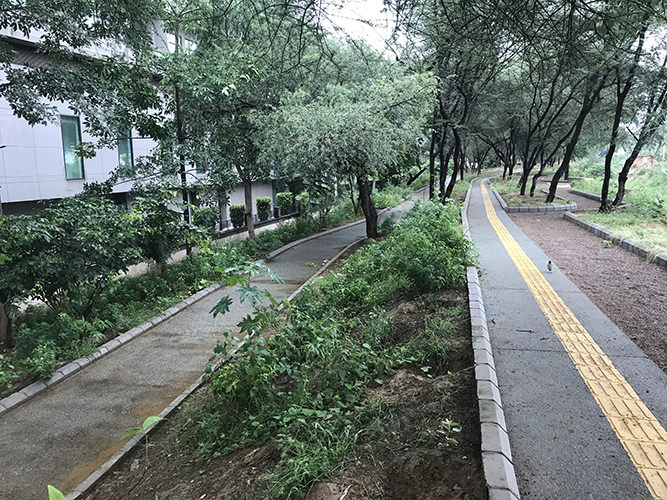 2018-9-23. Paras Area
2018-9-23. Paras Area -
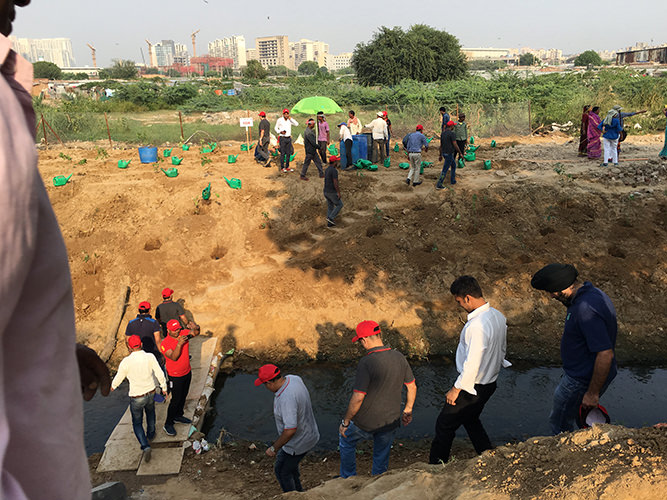 2018-10-5 Before Completion Construction on in the Sector 56 area
2018-10-5 Before Completion Construction on in the Sector 56 area -
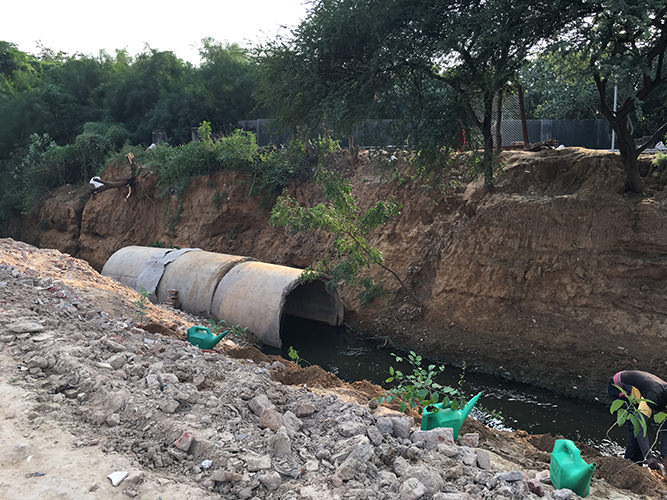 2018-10-5 Construction on in the Sector 56 area
2018-10-5 Construction on in the Sector 56 area -
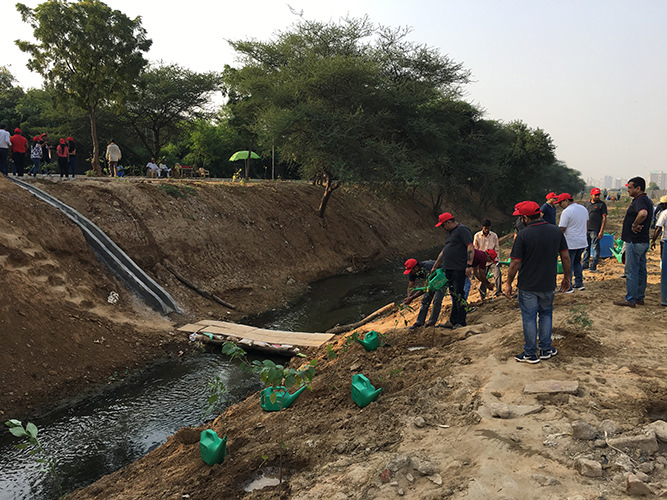 2018-10-5 Construction on in the Sector 56 area
2018-10-5 Construction on in the Sector 56 area -
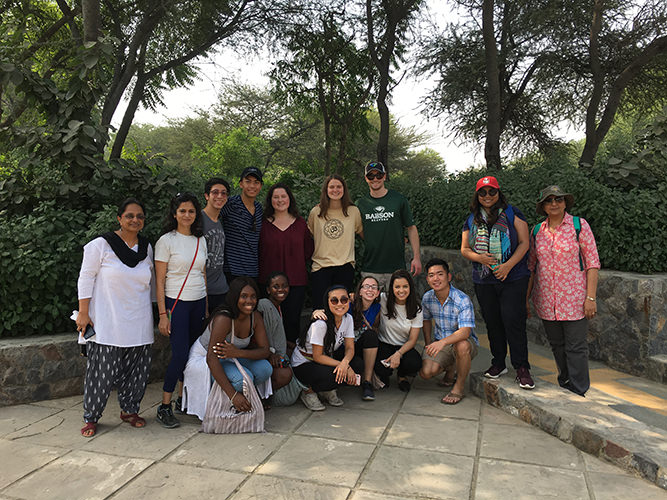 2018-10-8 Bapson College Students came for an educational walk at the Bundh,
2018-10-8 Bapson College Students came for an educational walk at the Bundh,
as one of the stops on their tour in India
An integrated system for proper collection and discharge of rainwater has been constructed all along the Bundh. The collection and channelling of rainwater including recharge chambers, trenches, pits and laying of perforated pipes, ensure that rainwater flows in the right direction and recharges the groundwater table as well as the nallah.
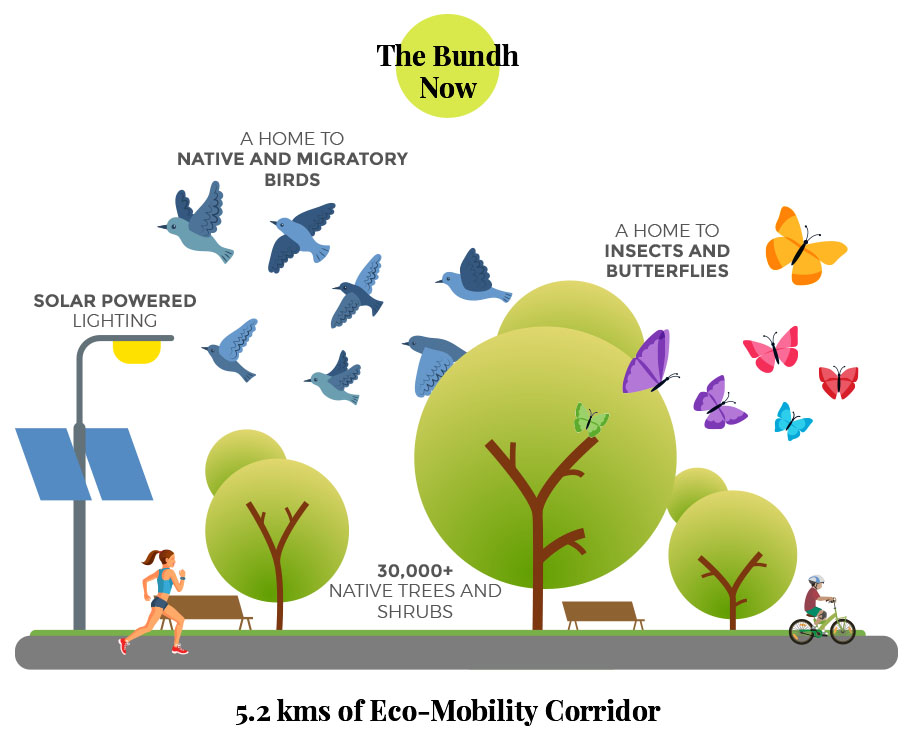
Once deemed as a derelict, unusable area; the rejuvenated Bundh has upgraded its surrounding neighbourhood. The process has ensured plantation of over 30,000 native trees and shrubs on the bundh, restoring the biodiversity of the area and attracting fauna to the region. Solar lights have been used on the entire stretch, reducing the dependence on non-renewable sources of energy, and ensuring the rejuvenated Bundh is now more eco-friendly and environmentally sustainable.
Chakarpur Waziraband Bundh provides universal accessibility for all, including ramps for strollers, wheelchair accessibility, and those with visual challenges or on crutches. More than 30-40% of the local community commutes on foot or on cycle. This linear space provides thousands of commuters a safe and healthy mobility corridor that cuts across the city.
This one-of-a-kind project is a replicable example that showcases that clean and green public spaces and infrastructure for sustainable mobility can be made available in the heart of the city.

Doers & Believers



